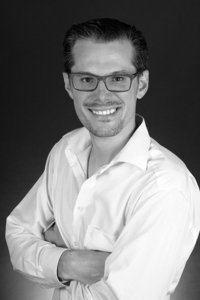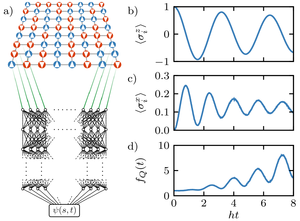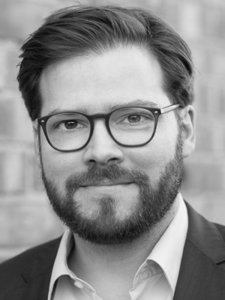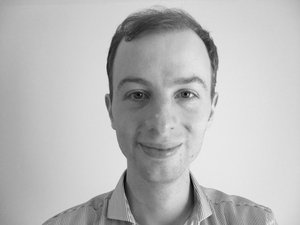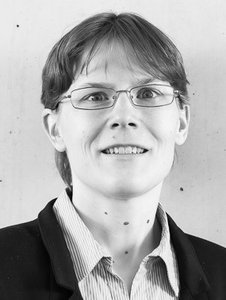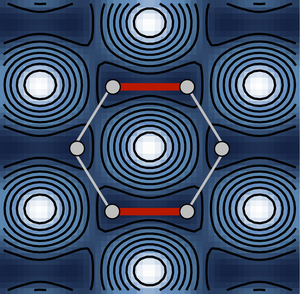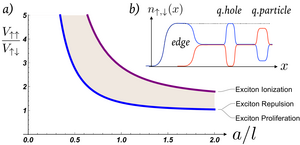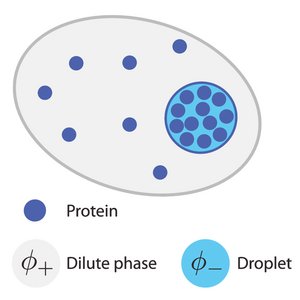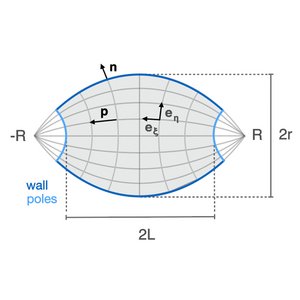
Highlights
Awards and Honors
ERC Starting grant for Christoph Weber
The European Research Council (ERC) has selected 436 early-career top researchers from 40 nationalities across Europe in the 2020 'Starting Grant' competition. The prestigious grants enable the best young researchers in Europe to build their own teams and to conduct pioneering research across all disciplines. Among the awardees is Christoph Weber, research group leader at the MPI-PKS and the Center for Systems Biology Dresden. With his project „FuelledLife”, Christoph and his group want to understand how living cells regulate phase separation and to unveil the role of phase separation for the emergence of life.
"Living cells rely on the compartmentalisation of thousands of different molecules and their chemical reactions,” Christoph explains. “Remarkably, many of such compartments form by phase separation of polymers and are controlled by sequence-specific interactions but also cellular fuel driving the system away from thermodynamic equilibrium. If we knew how such polymers evolve in time and compartmentalise in multi-component mixtures, we would better understand the role of phase separation in living cells and how prebiotic cells could have emerged at the origin of life.
My team and I will develop a theory for phase separation and chemical reactions in multi-component mixtures that are driven by irreversible, fuel-driven reactions. Our theoretical studies will let us understand how living cells regulate phase separation at the origin of life and determine the prerequisites of a protocell to divide, replicate and undergo selection."
Christoph will receive 1.5 million Euros over a period of five years. Congratulations to the Weber group!
Read morePublication Highlights
Quantum many-body dynamics in two dimensions with artificial neural networks
In the last two decades the field of nonequilibrium quantum many-body systems has seen a rapid development driven, in particular, by the remarkable progress in quantum simulators, which provide access to dynamics in quantum matter with an unprecedented control. However, the efficient numerical simulation of nonequilibrium real-time evolution in isolated quantum matter remains a key challenge for current computational methods especially beyond one spatial dimension. In this work we present a versatile and efficient machine learning inspired approach based on a recently introduced artificial neural network encoding of quantum many-body wave functions. We identify and resolve key challenges for the simulation of real-time evolution, which previously imposed significant limitations on the accurate description of large systems and long-time dynamics. As a concrete example, we study the dynamics of the paradigmatic two-dimensional transverse field Ising model, where we observe collapse and revival oscillations of ferromagnetic order and demonstrate that the reached time scales are comparable to or exceed the capabilities of state-of-the-art tensor network methods.
M. Schmitt and M. Heyl, Phys. Rev. Lett. 125, 100503 (2020)
Read moreM. Schmitt and M. Heyl, Phys. Rev. Lett. 125, 100503 (2020)
Awards and Honors
European funding to unravel scientific mysteries
Steffen Rulands receives ERC Starting Grant
The prestigious ERC starting grants allow the best young researchers in Europe to build their
own teams and to conduct pioneering research across all disciplines. Among this year’s
awardees is Steffen Rulands, research group leader at the Max Planck Institute for the
Physics of Complex Systems, and the Center for Systems Biology Dresden! With the
interdisciplinary project “AHH-OMICS” Steffen and his group aim to apply theoretical
methods originally developed in the physics of solids to understand the mechanisms
underlying the behaviour of cells during development, regeneration and ageing.
Steffen explains, “The recent breakthroughs of single-cell sequencing technologies for the
first time give us the opportunity to probe the inner life of cells with unprecedented
molecular detail. Biological function, however, relies on how many molecules work together
in space and time, which up to now cannot be inferred from these experiments.” The
theoretical physicist continues, “It’s like a car, where from detailed knowledge of all car
parts we still cannot understand how an engine works. We need methods from statistical
physics to do that! The same holds true for the cell – from detailed measurements of
molecules we don’t learn about biological function. The theoretical tools that will be
developed in my project will bridge this gap.”
The ERC project will combine the novel single-cell technologies with methods from
statistical and solid-state physics to understand collective processes regulating cellular
behaviour. With this conceptually new approach the Rulands group will overcome existing
limitations in an emerging technology and pioneer the application of methods from
statistical physics to single-cell genomics.
Steffen Rulands will receive 1.5 million Euros from the ERC over a period of five years. The
European Research Council (ERC) has selected 436 early-career top researchers from 40
nationalities across Europe in their 2020 'Starting Grant' competition. The funding, worth in
total €677 million, is part of the EU’s Research and Innovation programme, Horizon 2020.
Congratulations to the Rulands group!
Read moreInstitute's News
New Research Group at the Center for Systems Biology Dresden starts in January 2021
Starting in January 2021, Pierre Haas will lead the research group 'Self-organization of Multicellular Systems' at the Center for Systems Biology Dresden. The research of the group will focus on the mechanics of cells and tissues, with a particular interest in deriving the continuum theories that represent the rich mechanical behaviour of tissues during development, and to understand how robust development is compatible with mechanical constraints and variability. While the research of the group is theoretical, it will work in close collaboration with experimental groups at MPI-CBG and beyond.
Read moreAwards and Honors
Anne E. B. Nielsen receives the H.C. Ørsted Research Talent Prize 2020
The H.C. Ørsted Prize and the two H.C. Ørsted Research Talent Prizes are awarded annually to celebrate the Danish physicist and chemist Hans Christian Ørsted's influence on culture, art, thinkers, and scientists all over the world. The prizes are awarded by the H.C. Ørsted Association and Langeland municipality with support from the energy company Ørsted. H.C. Ørsted discovered in 1820 that an electric current produces a magnetic field, and to celebrate the 200 years anniversary of this influential discovery, the prizes are this year awarded to scientists, whose research is related to electromagnetism and its applications in a broad sense. Anne E. B. Nielsen receives the H.C. Ørsted Research Talent Prize, which is donated with a diploma and 10,000 Danish kroner, for her many innovative contributions to the fields of anyon research and quantum light, where she investigates possibilities that arise by combining quantum mechanics and electromagnetism. The prize ceremony took place on H.C. Ørsted's birthday on August 14 in Rudkøbing on the Danish island Langeland, where H.C. Ørsted grew up.
Read morePublication Highlights
Realization of an anomalous Floquet topological system with ultracold atoms
Coherent control via periodic modulation, also known as Floquet engineering, has emerged as a powerful experimental method for the realization of novel quantum systems with exotic properties. In particular, it has been employed to study topological phenomena in a variety of different platforms. In driven systems, the topological properties of the quasienergy bands can often be determined by standard topological invariants, such as Chern numbers, which are commonly used in static systems. However, due to the periodic nature of the quasienergy spectrum, this topological description is incomplete and new invariants are required to fully capture the topological properties of these driven settings. Most prominently, there are two-dimensional anomalous Floquet systems that exhibit robust chiral edge modes, despite all Chern numbers being equal to zero. Here we realize such a system with bosonic atoms in a periodically driven honeycomb lattice and infer the complete set of topological invariants from energy gap measurements and local Hall deflections.
Wintersperger et al., Nature Physics (2020)
Read moreWintersperger et al., Nature Physics (2020)
Publication Highlights
Excitonic Laughlin states in ideal topological insulator flat bands and their possible presence in moiré superlattice materials
We investigate few- and many-body states in half-filled ideal topological insulator flat bands realized by two degenerate Landau levels which experience opposite magnetic fields. This serves as a toy model of flat bands in moiré materials in which valleys have Chern numbers $C=\pm 1$. We argue that although the spontaneously polarized Ising Chern magnet is a natural ground state for repulsive Coulomb interactions, it can be in reasonable energetic competition with correlated Laughlin states of excitons when short-distance corrections to interactions are included. This is because charge neutral excitons in these bands behave effectively as charged particles in ordinary Landau levels. In particular, the Ising Chern magnet is no longer the ground state once the strength of a short-range intravalley repulsion is about 30% larger than the intervalley repulsion. Remarkably, these excitonic Laughlin states feature valley number fractionalization but no charge fractionalization and a quantized charge Hall conductivity identical to the Ising magnet, $\sigma_{xy}=±e2/h$, and thus cannot be distinguished from it by ordinary charge transport measurements. The Laughlin state with the highest density of excitons that can be constructed in these bands is an analog of $\nu=1/4$ bosonic Laughlin state and has no valley polarization even though it spontaneously breaks time reversal symmetry.
N. Stefanidis and I. Sodemann, Phys. Rev. B 102, 035158 (2020)
Read moreN. Stefanidis and I. Sodemann, Phys. Rev. B 102, 035158 (2020)
Institute's News
Call for ELBE postdoctoral Fellowships at the Center for Systems Biology Dresden now open!
Application deadline: 25 September 2020.
The ELBE program seeks outstanding external candidates who are passionate about bringing new ideas, concepts, or systems to the Center. ELBE postdoctoral fellows pursue an interdisciplinary research project in collaboration with members of the CSBD. They are encouraged to develop and use theoretical or computational approaches to study biological systems in close collaboration with experimental groups at the MPI-CBG and the TU Dresden.
Ideal candidates should have backgrounds in physics, computer science, mathematics or a related discipline, with a strong interest in working in a cross-disciplinary life-science environment. In some exceptional cases, ELBE fellows can be analytically-minded experimentalists in the field of cell or developmental biology, who work between a lab and a CSBD research group.
Please click on the link- button to see the full advertisement!
Read morePublication Highlights
Phase separation provides a mechanism to reduce noise in cells
Expression of proteins inside cells is noisy, causing variability in protein concentration among identical cells. A central problem in cellular control is how cells cope with this inherent noise. Compartmentalization of proteins through phase separation has been suggested as a potential mechanism to reduce noise, but systematic studies to support this idea have been missing. In this study, we used a physical model that links noise in protein concentration to theory of phase separation to show that liquid droplets can effectively reduce noise. We provide experimental support for noise reduction by phase separation using engineered proteins that form liquid-like compartments in mammalian cells. Thus, phase separation can play an important role in biological signal processing and control.
Klosin et al., Science 366, 464 (2020)
Read moreKlosin et al., Science 366, 464 (2020)
Publication Highlights
Active Forces Shape the Metaphase Spindle through a Mechanical Instability
The metaphase spindle is a dynamic structure orchestrating chromosome segregation during cell division. Recently, soft matter approaches have shown that the spindle behaves as an active liquid crystal. Still, it remains unclear how active force generation contributes to its characteristic spindle-like shape. Here we combine theory and experiments to show that molecular motor-driven forces shape the structure through a barreling-type instability. We test our physical model by titrating dynein activity in Xenopusegg extract spindles and quantifying the shape and microtubule orientation. We conclude that spindles are shaped by the interplay between surface tension, nematic elasticity, and motor-driven active forces. Our study reveals how motor proteins can mold liquid crystalline droplets and has implications for the design of active soft materials.
Oriola et al., PNAS (2020)
Read moreOriola et al., PNAS (2020)

